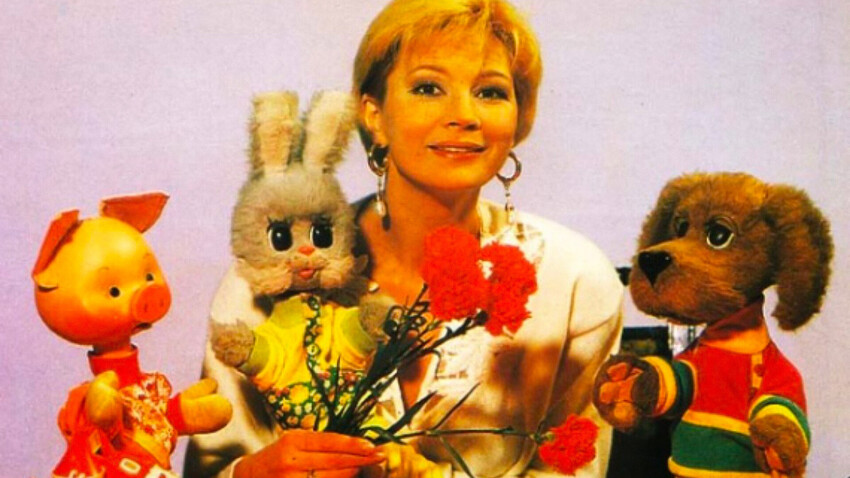
Soviet TV surprisingly had many shows for children of different ages. Despite the wish of the authorities to educate little viewers, these TV shows had no political slogans or straightforward Soviet propaganda. They discussed pure human values in a natural way. With the example of fairy tale heroes, children learned to understand what life was about.
“Greetings, dear children and respected comrade adults!” Every child, glued to the screen, waited for these words from TV host Valentina Leontyeva. The first episode of the show came out in 1976 and, in each episode, they showed a new feature-length cartoon or movie. ‘Aunt Valya’, as children affectionately called the host, prefaced each movie with the story of its literary source or simply with interesting facts about its creation. At the end of the show, the host asked questions to the young viewers sitting at home to think about and answer or gave them a creative task – and, in the following episode, she read their answers/replies.
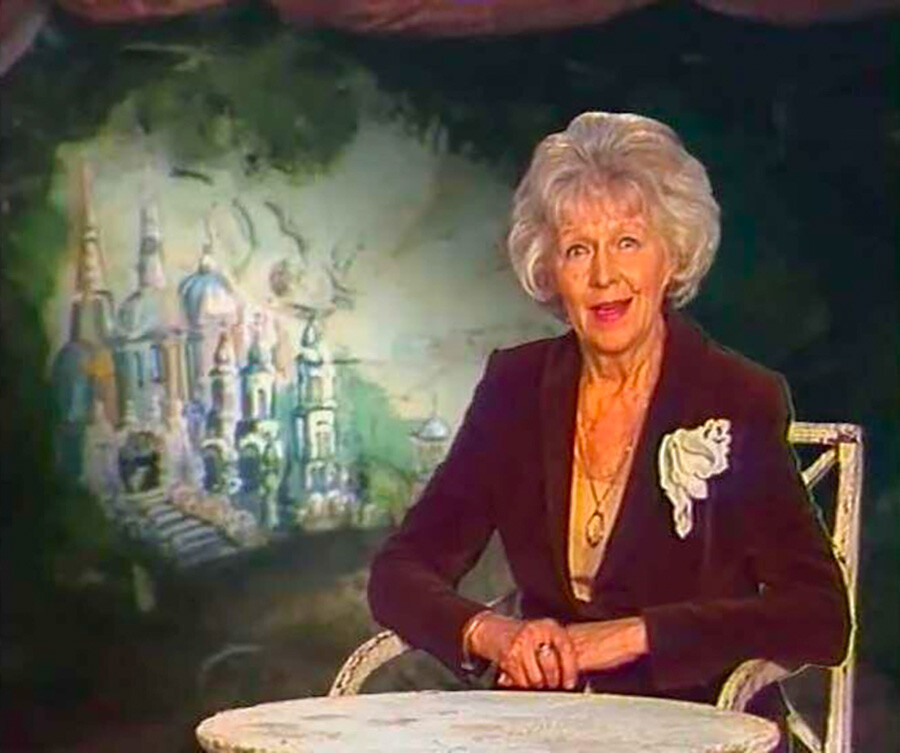
“I don’t remember which fairy tale she was talking about anymore, but, one time, Aunt Valya asked a question – what was the difference between the original fairy tale and its screen adaptation, which had just been shown. I wrote a long letter with a reply and, two-three weeks later, Aunt Valya read it at the end of the show along with the other best answers! This was pure joy for every child!” Olga says, who was a fan of the show as a child.
Another recognizable element of the show – the storyteller grandma who appeared at the beginning and the end of each fairy tale. She sat at a window in a traditional Russian costume and closed her window shutters at the end of the fairy tale, saying: “The fairy tale is now over, well done all of you who were listening!”
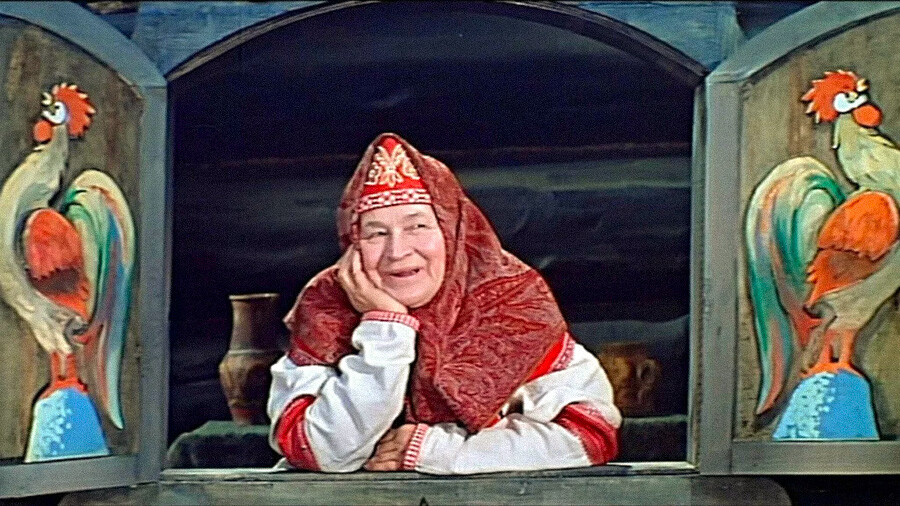
The oldest and the most beloved Soviet children’s TV show is still running. In 1968, the main characters of the show, who haven’t changed since, appeared on screen – piglet ‘Khryusha’, puppy ‘Philya’, hare ‘Stepashka’ and crow ‘Karkusha’. These characters play out scenes with moral lessons, after which children are shown a cartoon. The show ends with the lullaby ‘Tired Toys Are Sleeping’.
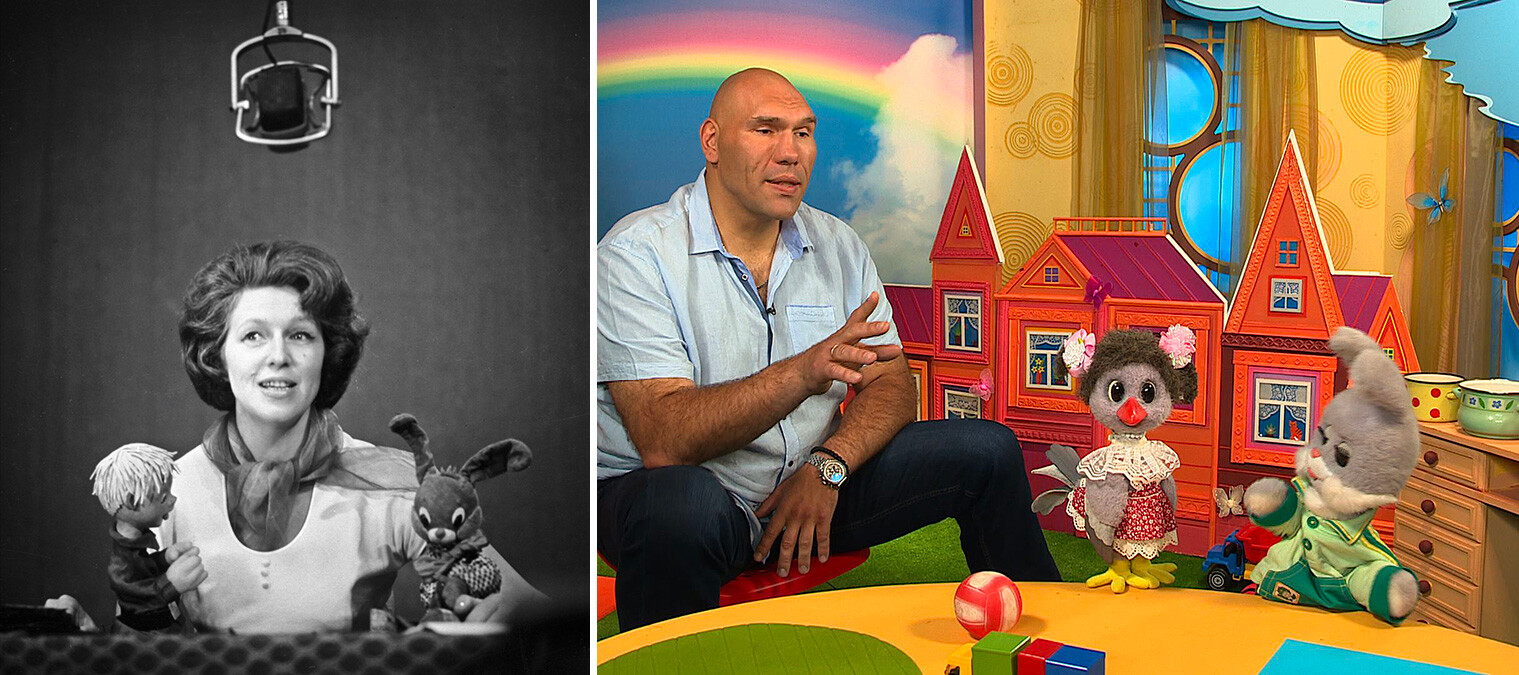
In 1988, Khryusha also became an American TV star. Producers Andrey Menshikov and Christopher Cerf filmed a Soviet-American TV special collaboration episode titled: ‘Free to Be… a Family’. In it, Khryusha meets Kermit the Frog from the U.S. children’s show ‘The Muppets’. However, the plot was more interesting to adults as it was a parody of the negotiations between General Secretary of the Communist Party of the Soviet Union Mikhail Gorbachev and American President Ronald Reagan, in which Khryusha and Kermit “discussed important political and social matters”.
There’s speculation that the idea for this show was copied from the American children’s show ‘Sesame Street’ by the head of preschool education management of the Ministry of Education of the USSR. Children’s author Eduard Uspensky also participated in creation of ‘ABVGDeyka’ (the very writer who invented ‘Cheburashka’, the characters of ‘Prostokvashino’ and the ‘Kolobki’ brothers).
Instead of dolls, clowns were the main characters of the show, who learned to read and write in a playful format along with their little viewers.
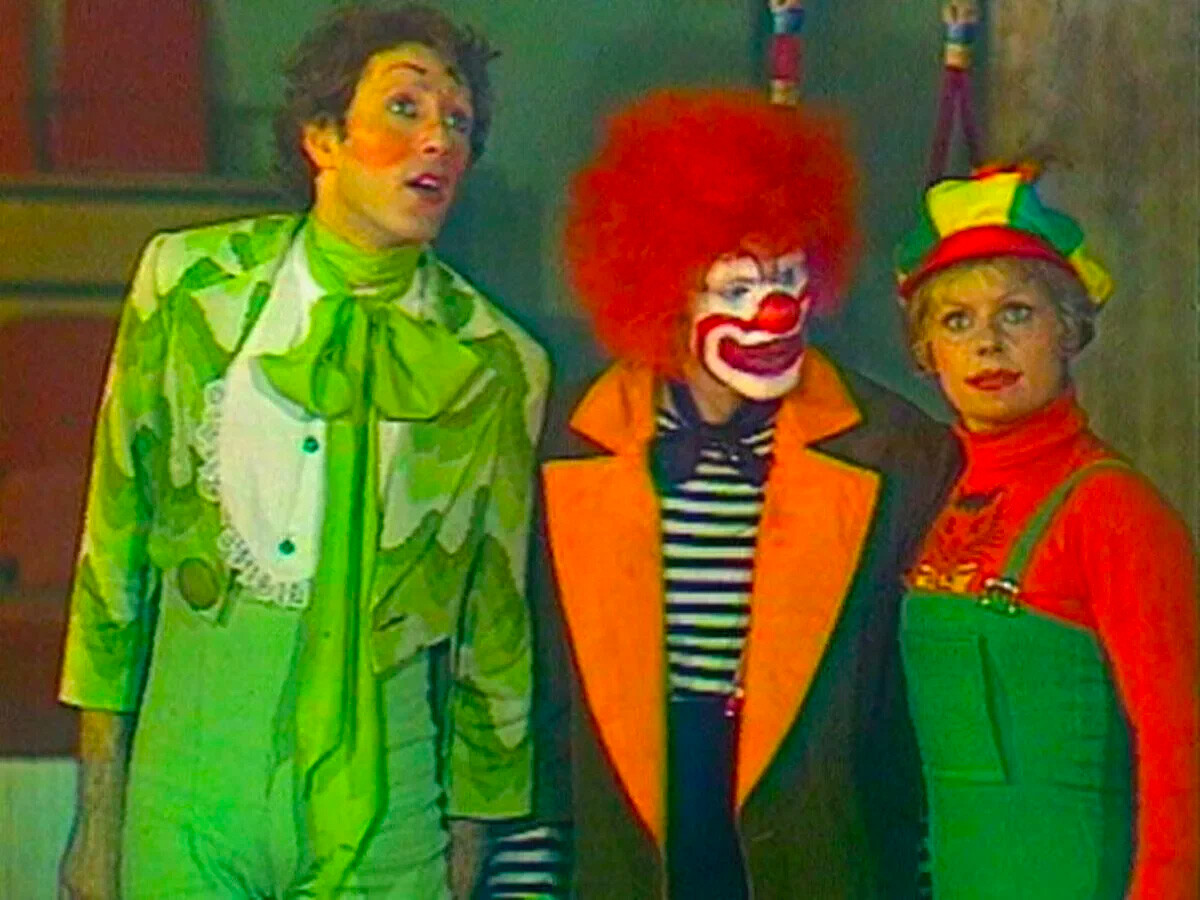
“Children played in the yard: some played tag, some played with a ball. Suddenly, a child’s voice sounded from one of the apartment windows: ‘ABVGDeyka’ is starting! All the children were gone just like that – they rushed to their homes to put on the TV and watch their favorite show with Iriska and Klepa,” ‘greenstarfilm’ remembers in the comment section under an old online episode of the show.
This show was not presented as purely a show for children – adults could also watch it with interest. But, the engaging stories about animals, their habitats and habits were especially beloved by children. Partially that was thanks to the show’s host: Alexander Zguridi, Vasily Peskov and Nikolay Drozdov – they consecutively replaced each other, but they were all equally loved by children.

Nikolay Drozdov in the studio.
ACC TV“This is one of my favorite programs. There was also ‘To Kids About Animals’. I watched them all with great interest, wrote everything down and kept notes, then I would take my father’s typewriter and transcribe and print my notes. Back then, I was mostly interested in the information about zoos and animal feeding. There were almost no books about the topic, the Internet didn’t even exist. I dreamed of founding a zoo,” Andrey Pustovarov says in an online discussion about the show.
This Sunday program aired at 9:30 am. In it, children’s collectives and theater performances were shown, as well as cartoons. The cartoons were chosen with the help of the audience – children sent letters to the editors, where they stated what they wanted to watch; the hosts picked which envelope to open.
According to viewers’ recollections, the show created a very pleasant weekend atmosphere and left them in high spirits for the rest of the day.
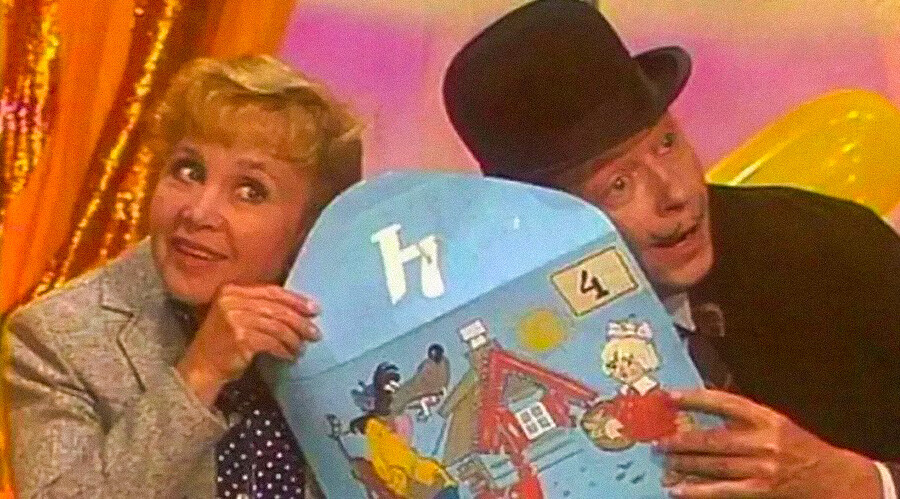
This educational show answered different children’s questions, for example: why are greenhouses built? What does paleontology study? How did money appear? This TV-encyclopedia gave scientific, yet simple answers and it quickly gained popularity. Initially, the episodes were shown in the movie preview format – before a feature movie in cinemas; only later did they appear on TV. The show’s intro, in which a boy cracks a walnut with a little hammer, was accompanied by a poem by Igor Razdorsky:
“The nut of knowledge is hard to crack
and yet we’re not used to backing down!
The TV magazine ‘Want To Know Everything’
will help us crack it!”
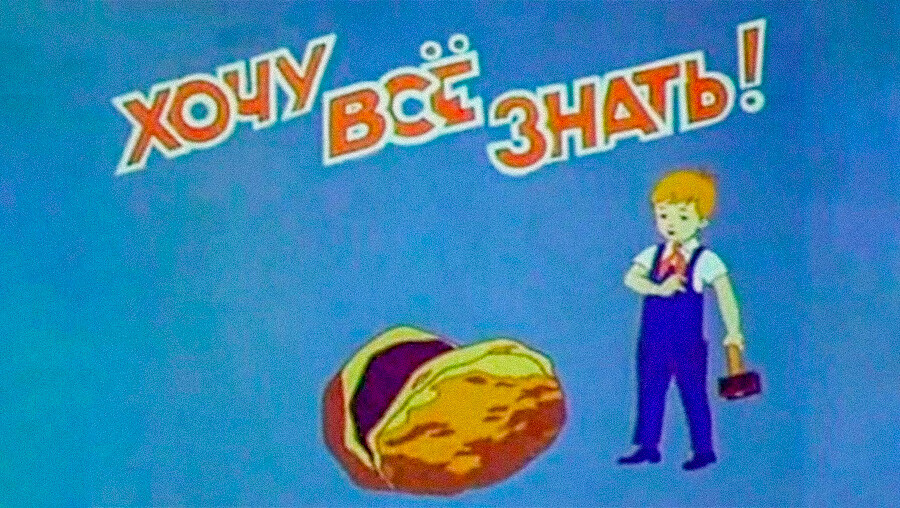
In 2021, the show was relaunched in the ‘Kinopoisk’ online movie theater. Its message remained the same – only the style and the questions that were answered in each episode changed.
This show from the late USSR taught kids English, French and German in a playful manner – each had its own narrative. For example, the English language was taught through the story of an alien called ‘Big Muzzy’ – the BBC even supplied the cartoon for the show. Also, the program also showed foreign cartoons and demonstrated how to cook simple recipes among other useful skills.
In the comment section of an online forum, Sergius Rusin reminisces about the show: “…when an episode aired, it was a true holiday for me. I still keep the recipe for ‘strawberry’ cookies, written down exactly as the hosts instructed. Very tasty, by the way! As for Muzzy, I have the memory of him walking in a garden, knocking down plums and saying: ‘Plums, plums…’”
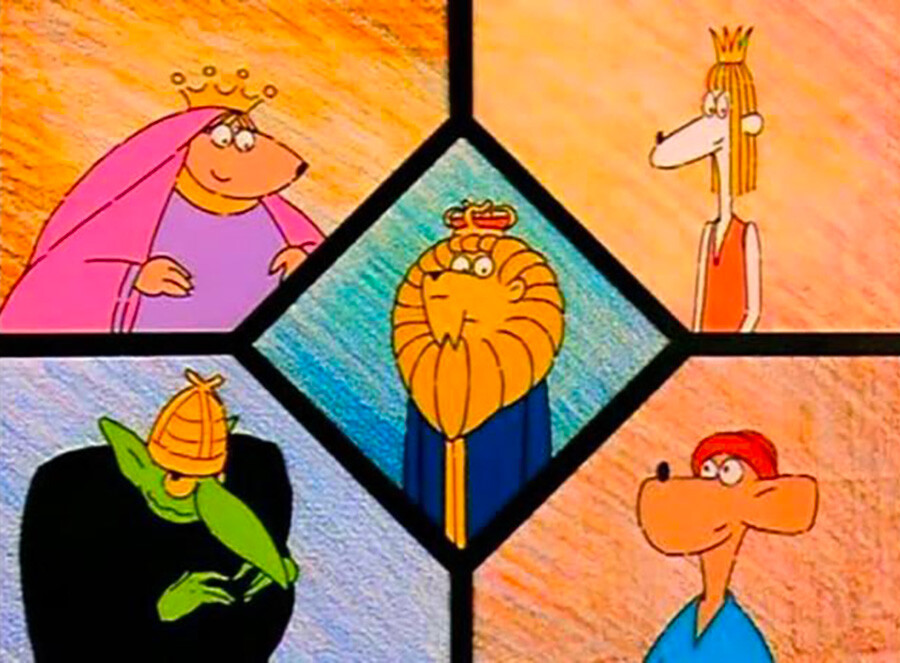
Dear readers,
Our website and social media accounts are under threat of being restricted or banned, due to the current circumstances. So, to keep up with our latest content, simply do the following:
If using any of Russia Beyond's content, partly or in full, always provide an active hyperlink to the original material.
Subscribe
to our newsletter!
Get the week's best stories straight to your inbox